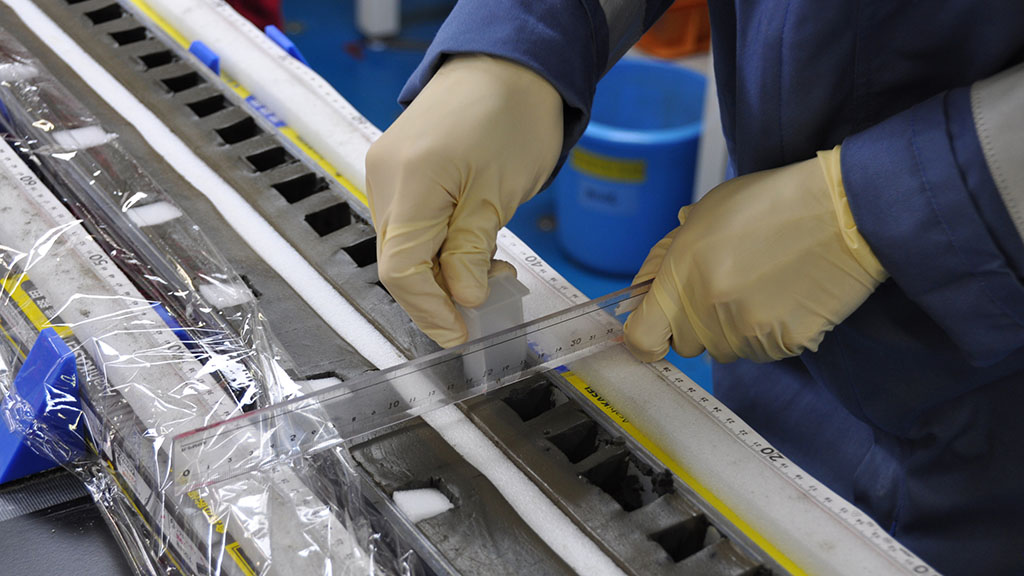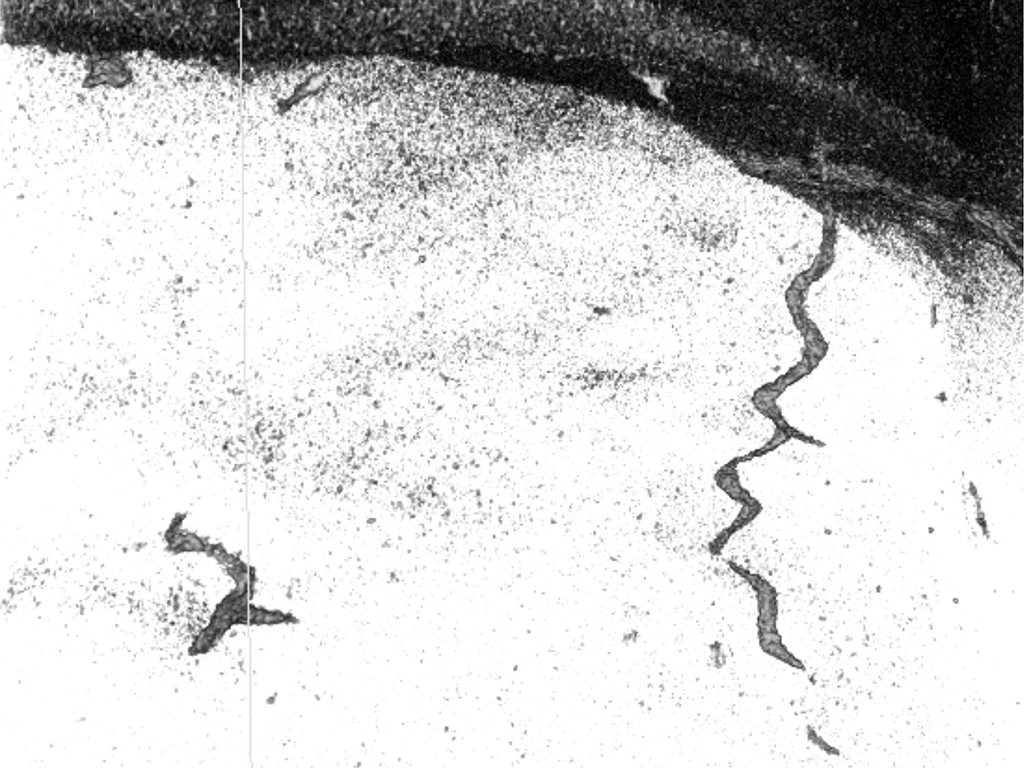Earthquake-triggered mass flows regulate life in the bottom of deep-sea trenches
Tomographic images taken from sediment samples collected from the greatest ocean depths ever reveal new information about the environmental conditions and bottom fauna of deep sea trenches. The results indicate that the activity of benthic communities in the hadal zone is more diverse than expected and regulated by mass flows triggered by earthquakes.

The hadal zone is the deepest and least known area of the Earth’s oceans, covering trenches 6-11 kilometers deep. The trenches are primarily associated with subduction zones where tectonic plates converge. The environmental conditions of the trenches are characterized by complete darkness, near-freezing water, and immense pressure that can exceed the pressure at sea level by over 1000 times. Due to the harsh conditions and difficult accessibility, the trenches have remained one of the least understood habitats on Earth.
The activity of benthic communities in trenches is diverse
Deep-sea benthic communities have been considered low in diversity and characterized by low biomass due to extreme conditions such as the scarcity of food and energy. However, new research results show that this assumption does not apply to the deepest parts of the oceans.
Trenches form in subduction zones where an oceanic plate slowly sinks beneath another plate. The collision of the plates causes powerful earthquakes, which, for example, repeatedly cause massive destruction in Japan. Earthquakes also trigger underwater landslides, which transform into mass flows (turbidity currents) that eventually dive to the bottom of the Japan Trench located east of Japan.
An international team of scientist from Finland, Austria, Switzerland, France and Japan investigated the characteristics of turbidity currents and their effects on the benthic community of the trench using tomographic images. The data shows that as the turbidity current slows down at the bottom of the trench, its sediment particle cloud condenses, locally suffocating the benthic fauna. The end of the current is followed by intense colonization, where opportunistic benthic species return to exploit the new nutrient-rich and oxygenated bottom sediment. Early colonizers include sea cucumbers. Over time, as organic matter decomposes, the bottom sediment becomes anoxic, and the metabolism of the microbial community changes. This final phase of colonization is represented by invertebrate species that utilize the microbial communities. The burrows made by the worm-like animal visible in the image resemble corkscrews because this shape increases the surface area of the burrow wall, facilitating microbial growth.

The impact of turbidity currents on benthic colonization can be compared to the effect of forest fires in the terrestrial realm: the fires reset vegetation successions and change key ecological parameters such as light, temperature and nutrient availability. Similarly, recurring turbidity currents in trenches regulate nutrient and oxygen conditions on the seafloor and benthic colonization successions in a consistently repetitive manner. Owing to mass flows, the species composition and activity of benthic communities in trenches are also more diverse than those of the surrounding deep-sea floor.
Bioturbation regulates the carbon cycle
The activity of benthic animals in modifying seafloor sediment is called bioturbation. It is a key marine ecosystem engineering process that strongly influences whether organic matter from marine organisms is being buried as part of sediment carbon storage or returning to the atmosphere as greenhouse gases like carbon dioxide or methane. The new information on bioturbation obtained in this study is essential for assessing both ecosystem functioning and how much of the carbon reaching the bottom of the trenches returns to the atmosphere and how much is removed from the atmosphere for very long periods.
The long sediment samples used in this study were collected from the Japan Trench at depths of up to 8 km in 2021 during the Expedition 386 Japan Trench Paleoseismology of the International Ocean Discovery Program (IODP). The study was recently published in the journal Nature Communications.
Original article
Jussi Hovikoski, Joonas J. Virtasalo, Andreas Wetzel, Mishelle Muthre, Michael Strasser, Jean-Noel Proust & Ken Ikehara (2025)
Bioturbation in the hadal zone, Nature Communications
More information
Jussi Hovikoski, Senior Scientist
Geological Survey of Finland GTK
jussi.hovikoski@gtk.fi
Tel. +358 29 503 0169
Joonas Virtasalo, Senior Scientist
Geological Survey of Finland GTK
joonas.virtasalo@gtk.fi
Tel. +358 29 503 2261
